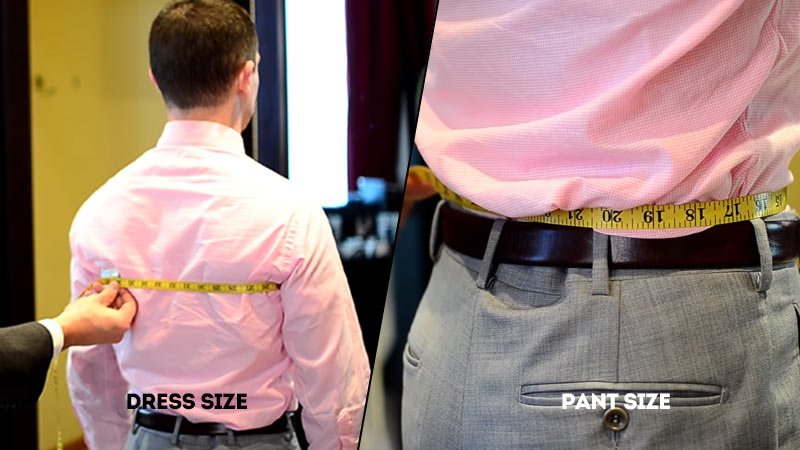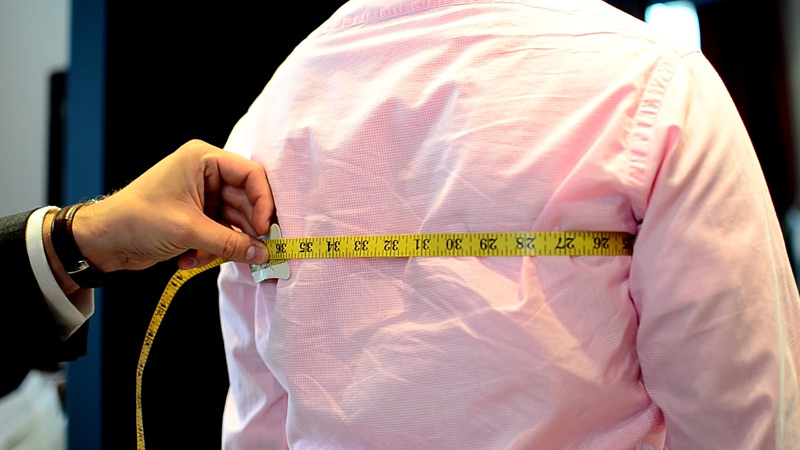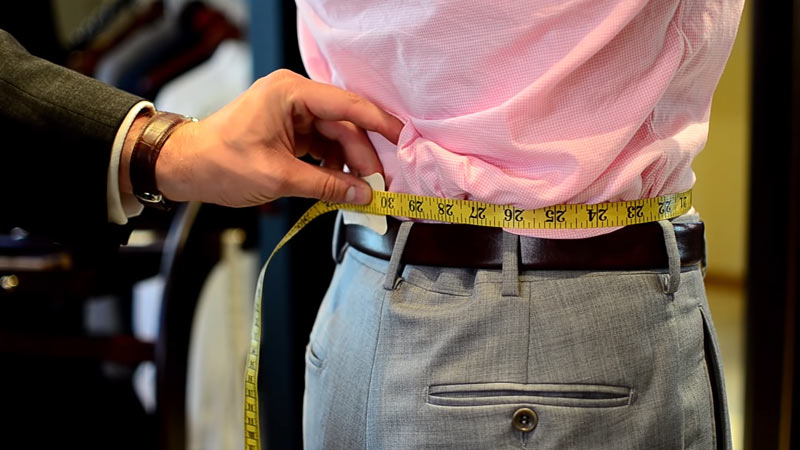Choosing the right size when shopping for clothing is a common challenge many of us face, particularly when it comes to dresses and pants. The confusion between dress size and pant size can lead to ill-fitting garments and unnecessary frustration.
In this blog post, we aim to demystify the differences between dress and pant sizes, equipping you with the knowledge to navigate the fashion world confidently.
We’ll address frequently asked questions and provide practical tips to help you find your perfect fit, ensuring you look and feel your best in every outfit. So, stay focused.

Understanding General Dress Sizes
Dress sizes are a standardized system used in the fashion industry to help customers find clothing that fits well. These sizes are typically represented by numbers (e.g., 2, 4, 6) or letters (e.g., XS, S, M, L, XL) and correspond to different body measurements.
The key measurements used for dress sizes include bust, waist, and hip circumference. Dress sizes can vary slightly between brands and regions, so it’s essential to check the specific size chart provided by each clothing brand before making a purchase.
Some brands may also offer petite, regular, and plus-size options to cater to different body types.
Understanding General Pant Sizes
Pant sizes, like dress sizes, are designed to assist shoppers in finding the right fit for their lower body. Pant sizes are represented by numbers, such as 28, 30, and 32, or by letters like XS, S, M, L, XL, XXL, and so on. The primary measurements considered for pant sizes are waist and inseam length.
The waist measurement corresponds to the narrowest part of the waistline, while the inseam length refers to the inside leg length, from the crotch to the hem of the pants. Just like dress sizes, pant sizes can also differ slightly among brands and regions, so checking the brand’s specific size chart is essential.
The Key Differences Between Dress and Pant Sizes
Dress and pant sizes are two common measurements used in the fashion industry to help individuals find clothing that fits them comfortably. While they serve the same purpose of determining garment size, there are key differences between dress and pant sizes. Let’s explore these differences:
Measurement Points

The primary difference lies in the measurement points used for dress and pant sizes. Dress sizes are typically based on the bust, waist, and hip measurements. This means that the fit of a dress is determined by the measurements around these areas to ensure the dress fits well throughout the body.
Pant sizes, on the other hand, are based primarily on waist and inseam measurements. The waist measurement determines the circumference of the waistband, while the inseam measurement determines the length of the pants from the crotch to the hem.
Sizing Systems

Dress sizes and pant sizes often use different sizing systems. Dress sizes are usually expressed in even numbers, such as 2, 4, 6, etc., or sometimes with a combination of letters and numbers (e.g., XS, S, M, L, XL).
Pant sizes, on the other hand, are often expressed as a combination of numbers, such as 28/32 or 10/34, where the first number represents the waist measurement, and the second number represents the inseam measurement (in inches).
Fit and Style

Due to the different measurement points, dresses, and pants have distinct fits and styles. Dresses are generally more forgiving in terms of fit, as they often have a looser or more flowing silhouette. This allows for more flexibility in sizing and can accommodate a broader range of body shapes.
Pants, on the other hand, have a more precise fit, especially around the waist and hips. The inseam length is crucial in determining how the pants will fall on the legs, making it essential to find the right size for a flattering and comfortable fit.
Ease of Measurement
Measuring dress size usually involves taking multiple measurements of the bust, waist, and hips, requiring more steps to determine the correct size. Pant size, on the other hand, requires only two measurements—the waist and inseam—making it a more straightforward process.
How do Fing the Perfect Fit for Dress and Pants?

Finding the perfect fit for dresses and pants can be a rewarding process that ensures you feel comfortable and confident in your clothing. Here are some tips to help you achieve the perfect fit:
Finding the Perfect Fit for Dresses
Measure Yourself
Take accurate measurements of your bust, waist, and hips. Use these measurements as a guide when shopping for dresses. Remember that different brands may have slight variations in their sizing, so it’s essential to check their size charts.
Understand Your Body Shape
Recognize your body shape (e.g., pear, hourglass, apple) to identify dress styles that flatter your figure. Different silhouettes suit various body types, and understanding this will help you narrow down your options.
Try Different Styles
Experiment with various dress styles, such as A-line, sheath, wrap, or fit-and-flare, to see which ones complement your body shape and highlight your best features.
Check the Length
Pay attention to the dress length, as it can significantly impact the overall look. Hemlines should fall at a flattering point on your body, such as above the knee, at the knee, or below the knee.
Consider Tailoring
If you find a dress you love but it’s not a perfect fit, consider getting it tailored. A skilled tailor can make adjustments to ensure the dress fits you impeccably.
Finding the Perfect Fit for Pants
Measure Waist and Inseam
Take accurate measurements of your waist and inseam (inner leg length) to determine your pant size. The waist measurement should be taken at the narrowest part of your waist, and the inseam measurement from the crotch to the desired pant length.
Know the Rise
The rise of the pants (the distance between the crotch and the waistband) affects the fit and comfort. Decide whether you prefer low-rise, mid-rise, or high-rise pants based on your body shape and personal comfort.
Consider the Leg Style
Pants come in various leg styles, such as straight, skinny, bootcut, and wide-leg. Choose a style that complements your body shape and aligns with your fashion preferences.
Check the Seat and Hips
Ensure that the pants fit comfortably around your seat and hips without feeling too tight or too loose. The fabric should lie smoothly without any pulling or sagging.
Try Different Brands
Different brands may have slightly different sizing and fit, so don’t hesitate to try pants from various brands to find the one that suits you best.
Move and Sit
When trying on pants, perform movements like sitting, bending, and walking to assess how well they move with your body. Ensure the pants stay in place and don’t restrict your movements.
Troubleshooting Common Fit Issues for Dress and Pants
Check the following section to troubleshoot common fit issues for dresses and pants.
Waist Gap
If you experience a gap at the waist of your pants or dress, consider using a belt or opting for pants with adjustable waistbands. Tailoring can also help achieve a more customized fit.
Tight Hips or Thighs
If the hips or thighs feel too snug, look for pants or dresses with added stretch in the fabric. Avoid styles that are too tight, as they can be uncomfortable and restrict movement.
Baggy or Loose Fit
If your clothing feels baggy or loose, try a smaller size or consider styles with a more tailored or cinched waist to enhance your silhouette.
Sagging Crotch
For pants with a sagging crotch, opt for a higher rise or a style with a better fit in the seat and hips. Proper tailoring can also address this issue.
Unflattering Length
If the dress or pants length is unflattering, check for petite or tall options, depending on your height. Hemming is an option to adjust the length to your preference.
Excess Fabric at the Back
For dresses or pants with excess fabric at the back, you may need to find styles designed for a fuller seat or seek tailoring adjustments.
Tips for Navigating Online Shopping to Buy Dress with Perfect Fit
By following these tips, you can navigate online shopping more confidently and increase your chances of finding a dress with the perfect fit, making your online shopping experience a success.
Check the Size Chart
Before purchasing, carefully review the size chart provided by the retailer. Compare your measurements with their size guide to find the best fit.
Read Reviews
Look for reviews from other customers who have purchased the dress you’re interested in. Their feedback can provide valuable insights into the fit and sizing.
Consider Model Measurements
Pay attention to the model’s height and measurements, often provided in the product description. This can help you gauge how the dress might fit your body.
Look for Detailed Descriptions
Seek detailed descriptions of the dress, including fabric type, stretch, and fit information. This will give you a better idea of how the dress will drape and move.
Research the Return Policy
Ensure the online store has a flexible return policy, so you can exchange or return the dress if it doesn’t fit as expected.
Choose Retailers with Virtual Fitting Tools
Some online retailers offer virtual fitting tools that use your measurements to recommend the best size for a particular dress. Utilizing such tools can improve your chances of finding a better fit.
Stick to Brands You Know
If possible, shop from brands you have experience with or whose sizing you are familiar with to reduce the risk of fit issues.
FAQs
What’s the primary difference between dress size and pant size?
The key difference lies in the measurement points used. Dress sizes are based on bust, waist, and hip measurements, while pant sizes are determined primarily by waist and inseam measurements.
Are dress and pant sizes using the same sizing system?
No, dress sizes are often expressed in even numbers or letter sizes (e.g., XS, S, M, L), while pant sizes are typically a combination of numbers representing the waist and inseam measurements (e.g., 28/32, 10/34).
How do I find my perfect dress size?
To find your dress size, measure your bust, waist, and hips accurately. Refer to the brand’s size chart for guidance, as sizes can vary between different retailers. Consider your body shape and try different dress styles to discover what flatters you best.
What about finding the right pant size?
To determine your pant size, measure your waist and inseam (inner leg length). Ensure the waistband fits comfortably, and the inseam length is suitable for your height and preferred pant length.
What should I do if I’m between sizes or in doubt about my measurements?
If you find yourself between sizes or uncertain about your measurements, consider the fabric and stretch of the garment. Choose a size that allows for some flexibility, and read product reviews from other customers to get insights into the fit.
Bottom Line
The distinctions between dress size and pant size are essential for achieving a comfortable and flattering fit in your clothing. By following our guide and considering your unique measurements, body shape, and personal style preferences, you can confidently navigate the fashion world.
Remember that sizing can vary between brands, so it’s crucial to check each retailer’s size chart and utilize customer reviews to find the perfect fit for every dress and pair of pants you add to your wardrobe.
With this newfound knowledge, you’ll be well on your way to looking and feeling fabulous in all your outfits. Best of luck.
Leave a Reply